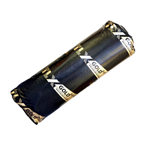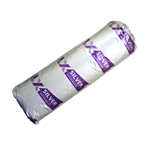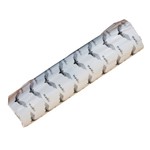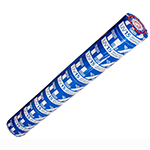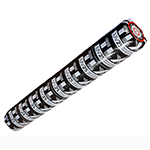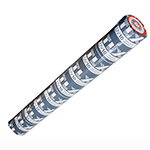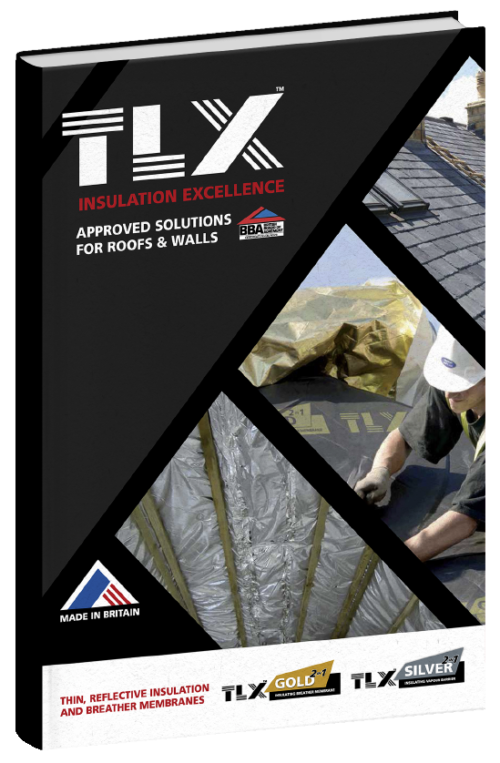What is a U-Value?
Working in the roofing or building industry is an incredibly technical profession, and there is a huge range of values and measurements that you must comply with to ensure your build is both safe and performing optimally. You should calculate these values before you begin any insulation installation and keep them in mind when choosing your preferred materials.
Many of these values are set by external agencies, such as building regulations bodies, to ensure that buildings in the UK meet prescribed standards. But what are these values? And how can you achieve them? Here’s everything you need to know about the U-Value, and what it means for you:
 What is a U-Value?
What is a U-Value?
One of the most important terms that every roofer should know is U-Value. The U-Value of a building element is extremely important because it must reach certain levels or standards to comply with building regulations in the UK. But what is a U-Value? This figure simply determined the total thermal resistances that make up an element of a building, most commonly this element is pitched roof insulation, roof insulation or wall insulation. To calculate U-Value, you would look at all the layers of that insulation, as well as any air gaps or other fixings that it includes.
You need to know that the lower the U-Value is, the better insulated a roof is, meaning that a lower U-Value is best. Multifoil insulation can contribute to producing a low U-Value in a thermal element.
U-Values are measured in units of W/m²K, and this unit will clearly represent the ability of an element to transmit heat from a warm space to a cold space in a building. Building regulations are currently very focused on energy efficiency and the importance of insulation is widely accepted. For this reason, a 0.15w/m2k U-Value is the current building regulations requirement for a standard roof in the UK.
What is an R-Value?
An R-Value is another measure that is used to assess roof insulation and how effective or efficient it is. The R-Value will measure the thermal resistance of roof insulation, pitched roof insulation or wall insulation in units of m2K/W. You can easily calculate the R-Value of an insulation product by dividing its thickness by its lambda value, and this will clearly show you how well the roof insulation resists heat transfer at a specific thickness. The best insulation will have a high R-Value at a low thickness, meaning that it can resist heat loss just as well, or even better, than its thicker counterparts. This is something that multifoil insulation is particularly effective at.
This all sounds straightforward, but you won’t be able to make this calculation if you don’t know what the lambda value of your product is. This value is sometimes also referred to as the K value. It simply measures a product’s thermal conductivity using units of W/mK. To prevent heat loss, the product you choose should have a lambda value that is as low as possible.
How to meet current building regulations with TLX Silver
Building regulations are statutory requirements in the UK, and they help ensure that new buildings, conversions, renovations and extensions (domestic or commercial) are going to be safe, healthy and high performing. When choosing roof insulation for any building project then, it’s important to ensure that it complies with building regulation requirements. TLX Silver is a multifoil insulation product and it is particularly effective at insulating both new build and renovation projects. The best way to achieve the lowest possible U-Value with TLX Silver multifoil insulation is to use it as part of a hybrid system alongside additional insulation. When utilised in this way, TLX Silver multifoil insulation can be used to reach U-Values as low as 0.11W/m2k. PIR board, mineral wool and phenolic board insulation are all compatible with TLX Silver and TLX Gold multifoil insulation, so if you do choose to opt for a hybrid approach to ensure that building regulations are met then there are plenty of options available to you.
You can achieve optimal performance with TLX Silver by installing it underneath the rafters for a cold deck roof and then fixing it in place with 38x38mm battens. You should then fix additional insulation in between the rafters. You need an unventilated air space between the TLX Silver multifoil insulation and additional insulation to achieve maximum efficiency and meet current building regulations.
How to meet current building regulations with TLX Gold
TLX Gold gives all the benefits of multifoil insulation, with the added benefit of an integrated breathable membrane. This means that it is both easier to install and easier to achieve current building regulations with TLX Gold. For insulation between and over rafters, TLX Gold is the perfect addition to the insulation profile. TLX Gold multifoil insulation can either be draped over rafters or pulled taut, making it a versatile solution, and a 0.15w/m2k U-Value can be achieved with both the TLX Gold draped approach and the TLX Gold taut approach. To maintain optimal performance, it is essential to ensure a 20mm unventilated air gap underneath TLX Gold, as this will be vital to ensure that the multifoil insulation performs optimally.
Just like TLX Silver, TLX Gold multifoil insulation also performs well when used as part of a hybrid insulation solution. This is because the better the material is at preventing heat transfer, the greater the level of insulation. No matter which TLX multifoil insulation solution you use for your roof insulation, it remains one of the best ways of ensuring that your U-Values are low enough to meet current building regulations for your project.
Do You Require a Bespoke Solution?
We would love to hear from you. Our helpful team of product experts are on hand to help with bespoke solutions and U-Value calculations For technical queries, simply call +44 (0)1204 674 730. Also, our LABC-approved solutions guide has a wide range of pre-calculated solutions. You can download your free copy from the footer below.
Sample Pack Request
Error: Contact form not found.

